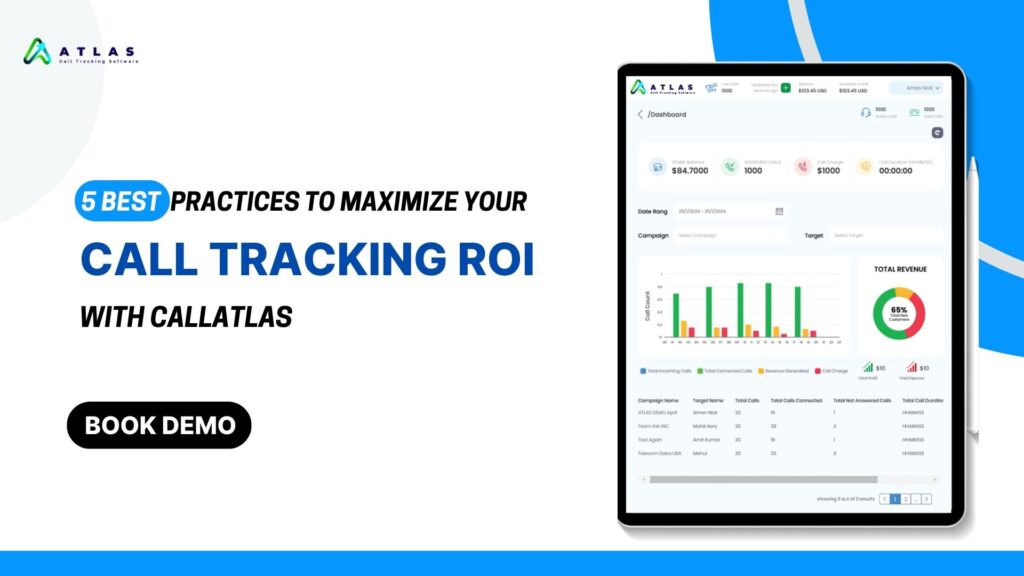Effective call tracking can transform marketing strategies and optimize ROI, offering deep insights into customer behavior, campaign performance, and client retention. With CallAtlas, you can track every call’s journey, helping you attribute marketing spend accurately and increase the impact of your efforts. To fully leverage CallAtlas’s potential, consider these five best practices that will help you maximize ROI.
1. Set Clear Goals for Your Call Tracking Strategy
Every successful marketing strategy starts with defined objectives, and call tracking is no exception. Setting clear goals for your call tracking efforts helps you measure outcomes effectively and identify areas for improvement. With CallAtlas, you can tailor tracking parameters to specific objectives, such as increasing conversions, enhancing customer service, or reducing call handling times.
- Example: Define if your goal is to track new leads, support existing customers, or reduce missed calls. Clear goals make it easier to customize CallAtlas features to meet your needs.
2. Utilize Dynamic Call Tracking for Precision
Dynamic call tracking assigns a unique phone number to each visitor based on their source, allowing you to track calls from different campaigns and keywords accurately. This practice offers a precise view of which ads, keywords, or campaigns bring in the most calls, providing you with valuable data for optimizing ad spend.
- Pro Tip: Use CallAtlas’s dynamic number insertion (DNI) to track each visitor’s call path. DNI automatically adjusts numbers based on a visitor’s traffic source, so you get granular data without manual tagging.
3. Integrate Call Tracking with Your CRM
Integrating CallAtlas with your CRM streamlines workflows and enables your team to analyze customer interactions in real time. By syncing call data with customer profiles, you gain a complete view of client histories, preferences, and interaction patterns, leading to better service and higher customer satisfaction.
- Implementation Tip: Map customer calls to their respective profiles and log interaction details. This data enables your sales and support teams to provide personalized, efficient service.
4. Analyze Call Data for Continuous Improvement
With CallAtlas’s robust reporting features, you can dive deep into call analytics, identifying patterns and areas for optimization. Look at metrics like call duration, location, time of day, and conversion rate to get a clear picture of how your campaigns perform. Regular analysis allows you to adjust strategies for more effective targeting and better ROI.
- Metric to Watch: Focus on conversion rates per source or campaign. Identify which sources yield the highest conversions and reallocate resources to boost results.
5. Train Your Team on Call Handling Best Practices
Even the best call tracking system needs skilled people behind it. Invest in training your team on best practices for call handling, whether it’s improving greeting standards, optimizing response times, or resolving issues more effectively. Well-trained teams contribute to higher client satisfaction and retention, making every call count.
- Suggested Training Focus: Use CallAtlas’s call recording feature to review real interactions and provide specific feedback. Listening to calls and discussing improvement areas fosters better customer interactions and outcomes.
Ready to see how CallAtlas can elevate your marketing ROI?
Try these practices and unlock the full potential of call tracking today!
Conclusion
Maximizing your call tracking ROI with CallAtlas is all about aligning your goals with the right tools, integrating with existing systems, and fostering a team prepared to deliver exceptional customer experiences. By applying these five best practices, you can gain deeper insights, make data-driven decisions, and ultimately increase the return on your call tracking investments.


